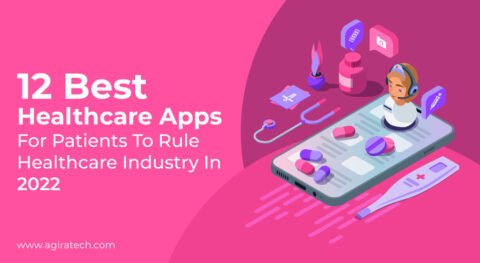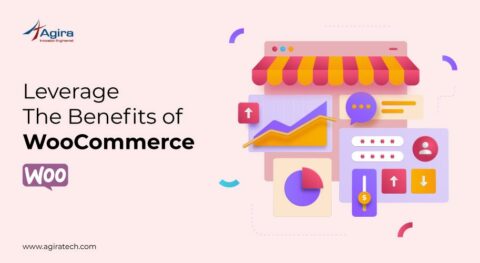When it comes to eCommerce vs. mCommerce, you should probably start with understanding what these phrases mean. According to a survey, smartphone accounts for more than 60% of all e-commerce traffic but just 52% of digital transactions. While most consumers browse on tablets and smartphones, many also complete their purchases on a screen.
1. E-commerce :
E-commerce is the practice of purchasing and selling goods or services over the Internet using an electronic mode. It’s an acronym for “electronic commerce.” In most cases, buyers use personal computers and notebooks to conduct e-commerce transactions. As a result, consumers search for a location to conduct their business. It applies to internet shopping and payment using devices such as a laptop.
Examples of E-commerce include Amazon, Flipkart, Quikr, Olx websites.
2. M-commerce :
M-commerce is the practice of purchasing and selling goods or services over the internet using portable mobile devices. It refers to the use of mobile devices for shopping and conducting business transactions anywhere they are, as long as they have access to the internet. It’s an eCommerce subcategory that does the same thing via mobile devices.
Examples of M-commerce include mobile banking like Paytm, in-app purchasing Amazon mobile app.
About the fact that both e-commerce and m-commerce share the same purpose of purchasing and selling through the internet, there are several distinctions. Let’s take a look at what they’re all about:
Mobility
E-commerce stands for electronic commerce, which refers to online shopping. Users must find a location to perform their purchases. But, most e-commerce operations are happening with desktop computers and laptops.
M-commerce refers to the use of mobile devices to conduct business transactions. People can conduct business transactions from anywhere as long as they have access to the internet on their smartphones and can complete transactions with a few taps on the keyboard.
Reachability
Digital shopping can have a far broader presence than e-commerce due to the portability of mobile devices. Because of the larger population, retailers can target consumers virtually everywhere, allowing them to get more out of mobile commerce.
Convenience Transactions
People can conduct business transactions from anywhere as long as they have access to the internet through their smartphones. This enables to complete transactions with only a few taps on the computer. They have to do your purchases on the machine, unlike e-commerce. Users would search for a location to conduct their purchases and using a laptop anywhere or when on the go is inconvenient.
Location Tracking
Due to the non-portability of computers, e-location commerce’s tracking capabilities are minimal. M-commerce applications, on the other hand, can use GPS technology, Wi-Fi, and other methods to map and locate user positions. As a result, e-commerce applications will have customized tips and information tailored to the user’s location. Notifications, for example, may enable local retailers to give targeted discounts to specific customers in a specific region.
Security
Credit cards are the most popular form of payment in e-commerce. Consumers, on the other hand, are also wary of sending their credit card numbers over the phone. Mobile commerce has a broader range of security features.
In addition to the standard security features used in e-commerce, such as two-factor authentication and multi-level authentication, m-commerce will also include biometric authentication (via retina scans, face ID, or fingerprints).
Benefits For Business With M-Commerce
Making the switch to m-commerce can be difficult for company owners who are accustomed to conventional e-commerce sites. However, there are a number of known advantages that make the switch worthwhile from a market standpoint.
Gain Better Customer Insights
To stay competitive in their respective niches, retailers must understand the behavior of their customers. Mobile applications, which are an important part of m-commerce, enable retailers to capture important data from customers. Consumer-oriented data, such as search habits, shopping preferences, and app use time, are useful analytics.
Retailers can submit better-targeted promotions that are more likely to engage and convert thanks to the advent of big data and AI. Retailers should also use historical evidence to improve their branding campaigns by prioritizing elements that align with their customers.
Increases Revenue
With the help of the right tools and experts, m-commerce can bring a rise in sales. Oberlo forecasts that the Global m-commerce turnover is to reach $2.91 trillion in 2020, a phenomenal 25.4 percent growth over the previous year.
Smartphone users are investing more time online, and searching for items is only a few taps away. Furthermore, push alerts with custom ads capture users’ interest and increase conversion.
M-commerce also allows people to buy stuff. The checkout procedure is simpler, with users being able to complete it with only a few taps on the phone. Naturally, this would result in more revenue and fewer abandoned shopping carts.
Enhance Customer Experience
The key to a successful company is to keep consumers involved at all times. In other words, the clients must believe they are receiving the finest service possible. This extends beyond the right to buy and browse at any time and in any place.
M-commerce improves user service by increasing the amount of assistance available to them. A sensitive live-chat feature on the app or the convenience of refunds and exchanges can support the customers’ brand loyalty.
Personalization, whether in the form of product lists or advertisements, creates the impression that the company is concerned with its customers. This is possible with an m-commerce ecosystem’s mixture of a mobile app, analytics, and locational data.
Reduce Cost
M-commerce also cuts down on ad placement costs, whether physically or online. One can send the new offerings and notifications directly to consumers via the smartphone app or push notification.
Previously thought to be prohibitively expensive, the cost of software creation has declined as a result of development resources that make the process easier. Businesses can reduce their consumer acquisition and retention costs by reducing their advertising budget.
Summary
To conclude, the shift from e-commerce to m-commerce is inevitable. Businesses that refuse to jump on the wagon will find themselves on the losing end. M-commerce offers better connectedness, engagement, and personalization. For businesses, it means higher revenues, stronger brands, and rewarding experiences for customers.
Talk To Experts
Get end-to-end web application development solutions for an unparalleled back-end and front-end experience. With our top-of-the-line technology expertise, We have been entitled to prestigious titles and awards as the best software development company that caters to industries and clients worldwide.










